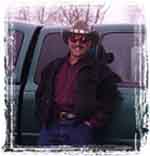"Everyday in America the calls go out to parrot rescues. Please take the family bird; they just can’t handle it anymore.
Why? The reasons for giving up a parrot are sometimes ones that dedicated aviculturists can understand—like the owner has died and there’s no family left to serve as caretakers, or the owner has moved overseas. But more often than not, four reasons bring parrots to be re-homed: 1) the previous family cannot provide the bird with adequate attention 2) the bird bites 3) the bird is loud or 4) the bird is messy.
Because the bird is messy? Could that be a reason for putting a long lived, highly sensitive bird like a parrot through the trauma of re-homing? ABSOLUTELY.
Can’t a parrot be taught NOT to be messy? The answer is NO! And this article is all about why not.
It all starts with one simple fact: parrots are NOT DOMESTICATED ANIMALS. While they are very smart and some species have color mutations, especially cockatiels and budgerigars, their BEHAVIORIAL GENETICS ARE THE SAME AS WILD MEMBERS OF THEIR SPECIES. That is to say, that even in the species where we HAVE had some impact on them genetically, the impact is only in their ability to hide from predators. Most of the ways we change them is by socializing them. Or, put another way, we have dropped our hand raised birds into a different social context than they would have in the wild. If, however, we put an egg laid by a hand raised pair into a wild nest and let wild parents raise that egg all the way through and this baby become a normal member of the wild flock, we would find it indistinguishable from any other member of the flock.
OUR COMPANION PARROTS ARE WILD ANIMALS. And for that reason, they can and will do exactly what their wild cousins do. It’s also why the best aviculturists constantly look to the wild parrot model to figure out what her companion at home needs and adjusts accordingly. We can learn a lot about how to care for our precious feathered friends in a home habitat by looking at what the wild members of their species do and trying to emulate that—minus the predators. When we want to know WHY they do something, we look to the wild.
So back to the mess…we see our birds take two bites from a nut that takes twenty to fully consume—then drop it—why? The answer: look to where in the ecosystem that bird lives and what parrots do. The PBS Nature series episode “The Real Macaw” (now out on DVD) demonstrates it nicely with some red-bellied macaws dropping some fruit from the top of trees in the Amazon rainforest, scattering the seeds so the trees can procreate and providing mostly uneaten fruit for all the other animals (including fish and insects) who cannot reach the tree tops. This in turn helps predators by feeding the fish and other animals that have just eaten the parrot discards. Many times the animals eating these fruits would be unable to do so—it takes a parrot beak to crack the shells. But the parrots have already removed those hard shells in most cases, allowing everyone to enjoy the fruit. Everyone wins.
But only if the parrot drops what she’s eating. Only if she makes that mess."
Please read the whole article: Parrots, messes, and the role parrots play in their ecosystems.







No comments:
Post a Comment